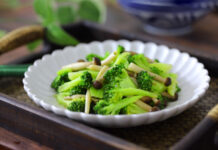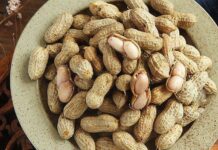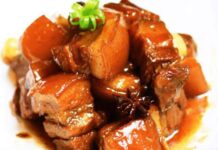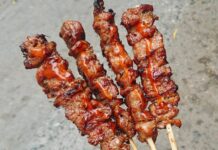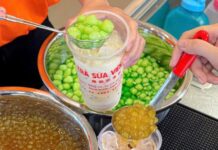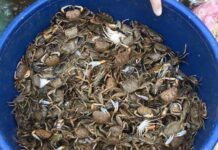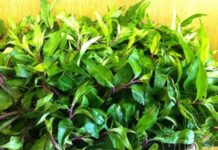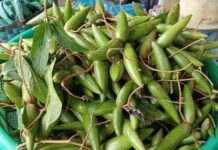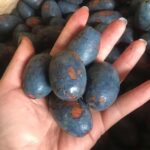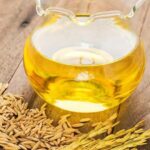The palm tree is an iconic symbol of the Phu Tho highlands, a popular vacation destination. With its lush green fronds, the palm tree is not only known for its use in roofing, fan-making, and broom-making but also as a rain shield for farmers of old.
Intriguingly, few people realize that the palm fruit is a specialty of this region. With its distinctive nutty and fatty flavor, palm fruit used to be a staple food, helping to ward off hunger in the past. Nowadays, it has become a famous delicacy, sought after and commanding a high price.
Ms. Luong Thi Thuy, a resident of Bac Son commune in Tam Nong district, Phu Tho province, is currently selling palm fruit at VND 100,000 per kg. She shared that her commune used to have numerous palm tree hills with thousands of trees scattered everywhere.
However, the area dedicated to palm cultivation is decreasing due to the demand for other fruit-bearing trees and the expansion of construction. Additionally, the palm fruit crop has been poor this year, so to supply her customers, Ms. Thuy has to buy from neighboring districts.
“In the past, palm fruit was quite cheap, only a few thousand dong per kg, as everyone in the village grew palm trees in their gardens,” she said. “But in recent years, the quantity of delicious palm fruit has become scarce, and the price has increased. Last year, I could only sell the best palm fruit for VND 50-60,000/kg. This year, delicious palm fruit is even harder to come by. Each time I place an order, I can only get a few dozen kg, and the price has already reached VND 100,000/kg, but it’s still not enough to meet the demand,” Ms. Thuy shared.
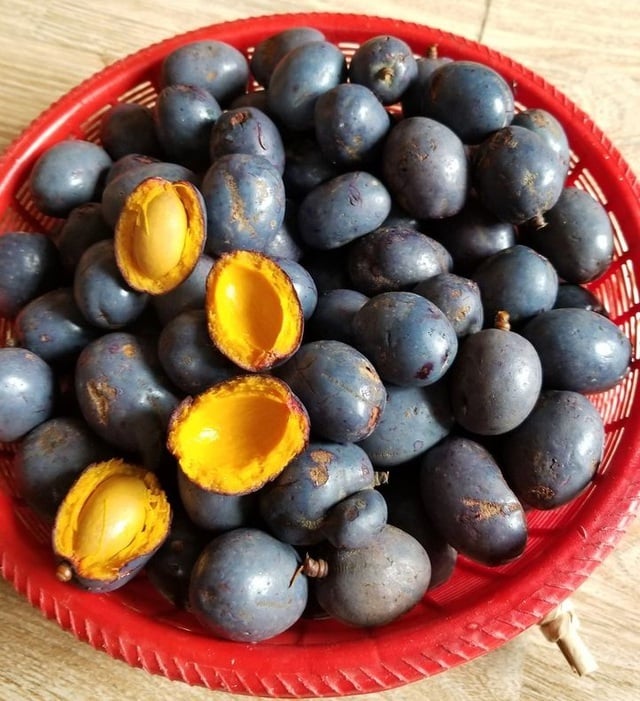
The palm fruit, with its nutty and fatty flavor, used to be a staple food during times of scarcity.
Usually, by this time of year, Ms. Hai Yen from Viet Tri, Phu Tho, would have sold dozens of batches of palm fruit from Cam Khe. But this year, she has yet to come across any satisfactory palm fruit.
“It’s currently the season for ripe palm fruit, but this year, the crop has been poor. We don’t have any for ourselves, let alone for selling,” she shared. “The other day, I was craving it so much that I went to the Central Market in Viet Tri and bought a small amount for VND 100,000/kg, but it still didn’t satisfy my taste. Now, even if I have the money, it’s challenging to find delicious palm fruit.”
According to Ms. Yen, palm trees bear fruit only once a year, and they ripen towards the end of the year. If picked too early, the fruit will be astringent, and if left too long, it will be infested with worms. Although the palm fruit may appear dull and unappealing on the outside, when cooked, the golden palm oil is released, and the rich, buttery flavor is comparable to butter, making it irresistible.
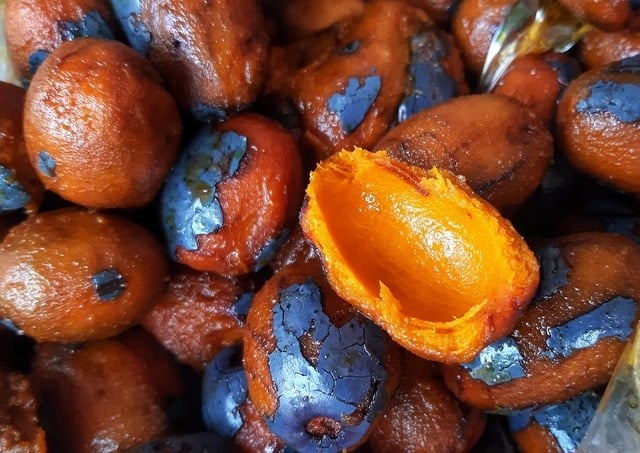
The ripe palm fruit has a deep purple color; if picked too early, it will be astringent.
Upon seeing her friends from her hometown posting pictures of golden palm fruit, Ms. Hong from Dong Da, Hanoi, couldn’t help but feel envious and immediately searched for palm fruit sellers online. However, she spent an entire day without finding a satisfactory seller.
“I joined a group with tens of thousands of members selling sticky palm fruit and looked for a seller in Hanoi. Surprisingly, someone named Ngoc Anh from Cau Giay posted pictures of delicious-looking palm fruit with thick, golden flesh for only VND 45,000/kg. I immediately placed an order, provided my address and phone number, but they asked me to pay in advance. When I requested cash on delivery, they blocked me,” Ms. Hong said.
Similarly, when inquiring with a few other sellers, Ms. Hong was always asked to transfer money first. If she disagreed, the seller would immediately block her and continue advertising cheap palm fruit.
“I was too craving it, so I ordered palm fruit from my hometown for VND 100,000/kg, plus VND 50,000 for shipping for a 2kg package to satisfy my craving. Although it’s a bit more expensive, it’s safer; I get to enjoy delicious palm fruit without worrying about being scammed,” Ms. Hong shared.
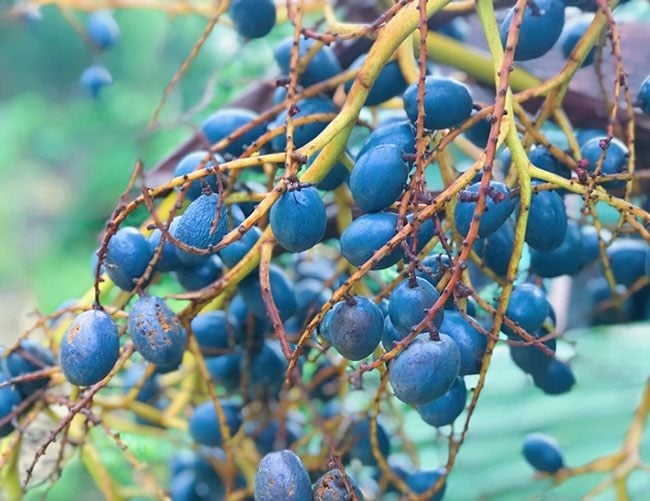
Palm fruit is priced at approximately VND 100,000/kg, but it’s not always available for purchase.
According to Ms. Hong, preparing palm fruit is simple. First, peel and rinse the fruit thoroughly. Then, place the fruit in a pot with water and cook it over the stove. When the water reaches a temperature of about 80 degrees Celsius, and you feel a gentle warmth on your hand, and see a few bubbles forming around the rim of the pot, turn off the heat. Afterward, cover the pot for about 20 minutes to let the fruit soften. To enhance the flavor, you can add a little sugar when removing the fruit from the pot. The palm fruit can be enjoyed directly or used in various dishes such as sticky rice, braised meat or fish, or even pickled.
Ms. Hong also shared: “Palm fruit has been a part of my life since childhood. During difficult times, my mother would often cook palm fruit with a little fat, salt, and seasoning to eat with rice. She also made pickled palm fruit, combining it with pickled cabbage or onions for daily meals. During the Tet holiday, despite the abundance of delicious foods, my father always asked my mother to make him a bowl of pickled palm fruit with onion to relieve the greasiness of other dishes. Even though I’ve enjoyed countless delicacies, when the palm fruit season arrives, I eagerly long for the simple flavor of my impoverished childhood.”
The Forgotten Fruit: A Tasty Treat with Health Benefits that Money Can’t Buy
This exotic fruit, native to the Phu Tho region, boasts a plethora of health benefits. While it is known for its hefty price tag, its potential impact on one’s health cannot be overstated. However, it is essential to exercise caution when consuming this fruit, as overindulgence may lead to adverse effects on the body.
What Type of Cooking Oil Has a High Smoke Point and is Best for Frying?
When it comes to frying, it’s important to choose a cooking oil with a high smoke point to minimize the health risks associated with heat-damaged fats. These damaged fats can release toxic compounds, so opting for oils with higher heat tolerance can make a significant difference in the quality and safety of your fried dishes.











